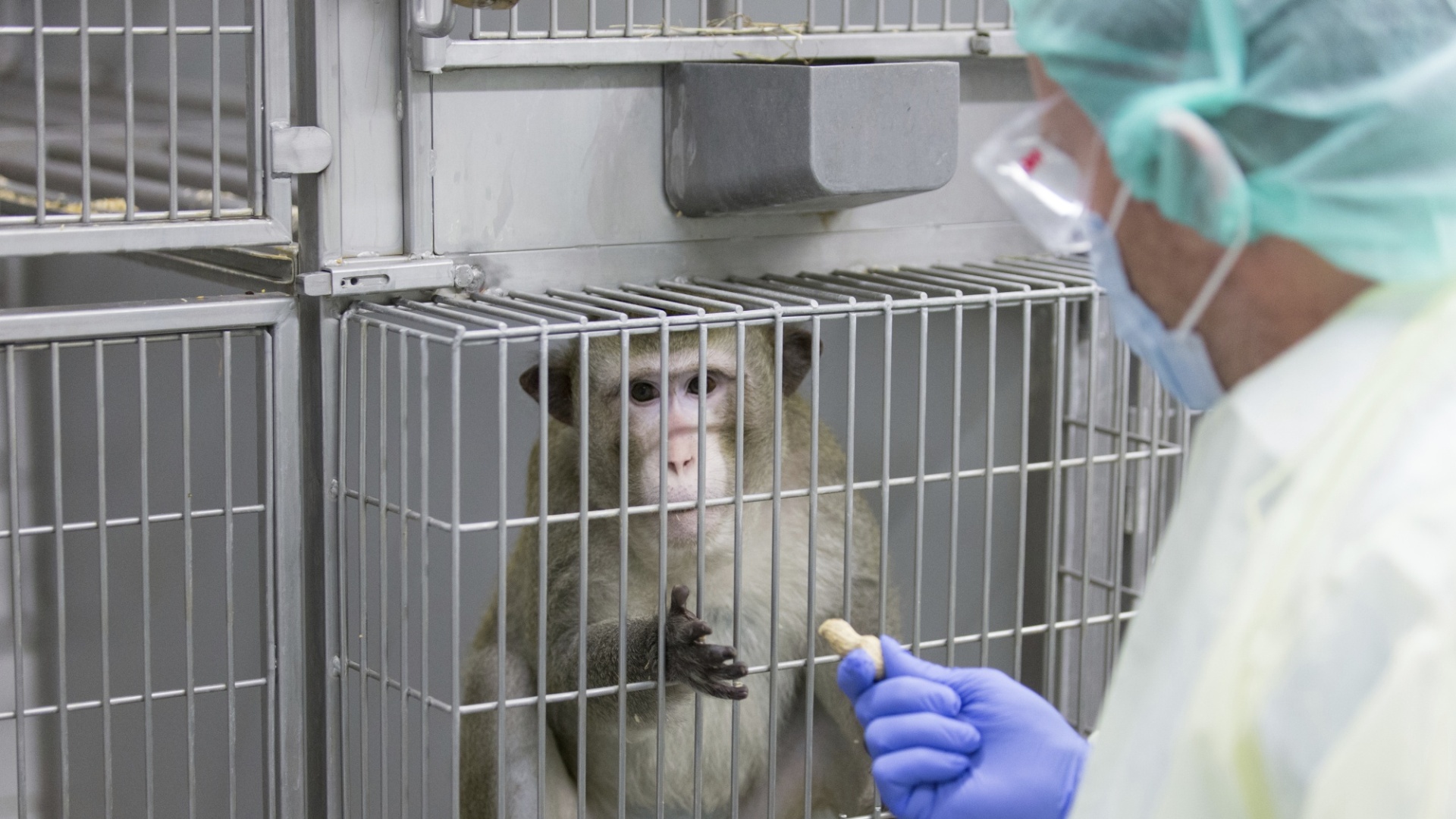Monkeys Recover With Experimental COVID-19 Vaccine: For the first time, one of the many COVID-19 vaccines in development has protected an animal, rhesus macaques, from the new coronavirus. The vaccine, an old-fashioned formulation consisting of a chemically inactivated version of the virus, produced no obvious side effects in the monkeys; human trials began on 16 April.
And encouraging monkey results for other vaccines are close behind.
Researchers from Sinovac Biotech, a privately held Beijing-based company, gave two different doses of their COVID-19 vaccine to a total of eight rhesus macaques. Three weeks later, the group introduced SARS-CoV-2, the virus that causes COVID-19, into the monkeys’ lungs.
None developed a full-blown infection, and the monkeys given the highest dose of vaccine had the best response: Seven days after the animals received the virus, researchers could not detect it in their pharynx or lungs.
Some of the lower dosed animals had a “viral blip” but also appeared to have controlled the infection, the Sinovac team reports in a paper published on 19 April on the preprint server bioRxiv.
RELATED: Which Of The COVID-19 Tests Proves Reliable
In contrast, four control animals developed high levels of viral RNA and severe pneumonia. The results “give us a lot of confidence” that the vaccine will work in humans, says Meng Weining, Sinovac’s senior director for overseas regulatory affairs.
“This is old school but it might work. What I like most is that many vaccine producers, also in lower–middle-income countries, could make such a vaccine,” says Florian Krammer, a virologist at the Icahn School of Medicine at Mount Sinai.
But Douglas Reed of the University of Pittsburgh, who is developing and testing COVID-19 vaccines in monkeys, says the number of animals was too small to yield statistically significant results.
In a manuscript in preparation, his team also raises concerns about the way the Sinovac team grew the stock of novel coronavirus used to challenge the animals, which may have evolved differences from the strains that infect humans. What’s more, the monkeys are not a perfect model for COVID-19 as they don’t develop some symptoms that kill many humans.
The study did address worries that partial protection by a vaccine could be dangerous.
Earlier animal experiments with vaccines against the related coronaviruses that cause severe acute respiratory syndrome and Middle East respiratory syndrome had found that low antibody levels could lead to aberrant immune responses, enhancing the infection and damaging their lungs.
But the Sinovac team did not find any evidence of lung damage in vaccinated animals that produced relatively low levels of antibodies, which “lessens the concern about vaccine enhancement,” Reed says. “More work needs to be done, though.”
To check the possibility that SARS-CoV-2 variants might thwart a vaccine, the Sinovac researchers mixed antibodies taken from monkeys, rats, and mice given their vaccine with strains of the virus isolated from patients in China, Italy, Switzerland, Spain, and the United Kingdom.
The antibodies potently “neutralized” all the strains, which are “widely scattered on the phylogenic tree,” the researchers noted.
“This provides strong evidence that the virus is not mutating in a way that would make it resistant to a #COVID19 vaccine,” tweeted immunologist Mark Slifka of Oregon Health & Science University. “Good to know.”
An experimental vaccine made by the University of Oxford has also shown promise, although the data have not yet been published. Vincent Munster and his team at the Rocky Mountain Laboratories gave six monkeys the vaccine, which contains a gene for the surface protein of SARS-CoV-2 stitched into a harmless adenovirus that infects chimpanzees.
Four weeks later, the researchers challenged the vaccinated animals and six controls. Seven days later, the vaccinated animals had a much stronger reduction of virus in their lower respiratory tracts than the controls. “The preliminary results look promising,” Munster says. “People just have to be patient.”
Sinovac recently started phase I human trials of its vaccine in Jiangsu province, north of Shanghai, which aim to gauge safety and immune responses in 144 volunteers. The company hopes to start phase II studies by mid-May that will assess the same endpoints but will enroll more than 1000 people.
If all goes well, Meng says, Sinovac will launch phase III efficacy trials that compare the vaccine with a placebo in thousands of people. Because of the low level of transmission now occurring in China, the company may run additional trials in harder hit countries.
“We can’t put all our eggs in one basket,” Meng says. Sinovac may also ask regulatory agencies in China and elsewhere for emergency authorization to give the vaccine to those at high risk of becoming infected, such as customs agents and police officers.
According to the World Health Organization, the Oxford vaccine and five others had entered human trials as of 26 April, and 82 candidates were in development. Most use versions of the SARS-CoV-2 surface protein, rather than whole, killed virus.
Meng says how a vaccine is made will not ultimately matter. “In this pandemic situation, the most important thing is to make a vaccine, no matter what kind of vaccine it is, that’s safe and effective as soon as possible.”





